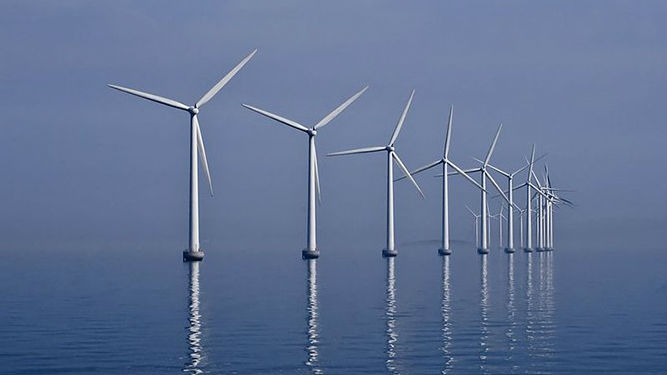Offshore Wind Conditions in U.S. Might Challenge Developers

University of Delaware researchers report in a new study that offshore wind may be more powerful, yet more turbulent than expected in the northeastern United States.
The findings could have important implications for the future development of offshore wind farms in the U.S., including the assessment of how much wind power can be produced, what type of turbines should be used, how many turbines should be installed and the spacing between each.
The study, led by Cristina Archer of University of Delaware and Brian Colle at Stony Brook University, analyzed historical data from 2003-11 at the Cape Wind tower located near the center of Nantucket Sound off the coast of Martha’s Vineyard, Massachusetts, and collected complementary data at the same location in 2013-14.
The researchers found that atmospheric conditions around Cape Wind are predominantly turbulent, or unstable, which is in stark contrast to prevailing data from European offshore wind farms in the Baltic Sea and the North Sea. European studies of offshore wind document that atmospheric conditions there are predominantly neutral, meaning neither too windy nor too still, but somewhere in the middle, with unstable wind conditions occurring only 20 percent of the time.
“By contrast, our study found that wind conditions at Cape Wind are unstable between 40 and 80 percent of the time, depending on season and time of day,” explains Archer.
When the atmosphere is stable, winds are smooth and consistent (think of when a pilot tells airline passengers to sit back and enjoy the ride because the weather is clear all the way to their destination.)
When the atmosphere is unstable, it is similar to turbulence experienced by airline passengers during a flight - the wind is choppy and causes high winds from above and slow winds from below to crash into each other and mix together, causing a bumpy and unpredictable ride for the air current.
Neutral conditions hover in the middle, with an average amount of turbulence and wind speed variation.
“The advantage of these turbulent conditions is that, at the level of the turbines, these bumps bring high wind down from the upper atmosphere where it is typically windier. This means extra wind power, but that extra power comes at a cost: the cost of more stress on the turbine’s blades,” says Archer.
“If you have increased turbulence, you’re going to design a different farm, especially with regard to turbine selection and spacing. And guess what? Even the wind turbine manufacturing standards are based on the assumption of neutral stability,” Archer says.
No measurements exist of wind and turbulence around an offshore wind turbine’s rotor blades in the ocean in the U.S. because until now none have existed. The first U.S. offshore wind farm is currently under construction at Block Island, off the coast of Rhode Island.
Instead, this type of data has been estimated based on either numerical simulations or using available buoy data to infer what the conditions would be at the height of the wind turbine’s rotor blades. But wind data measurements from 2003-09 at the Cape Wind Tower, a multi-level tower with sensors positioned approximately 65 feet, 131 feet and 196 feet in height, have shown that the Cape Cod region’s atmospheric conditions are generally unstable. Neutral conditions only occur approximately 20 percent of the time.
Further study is needed to understand whether this phenomenon is localized in the Cape Cod area, along the East Coast in general, or present throughout the U.S., since other offshore wind installations on the East Coast are planned for Maryland, New Jersey and Massachusetts.
“It’s important to ensure that science doesn’t underestimate the possible wind resources,” Archer says. “Now that we know what is happening in Cape Cod, we have more work to do to determine whether it exists anywhere else or whether it is unique to this region.”
